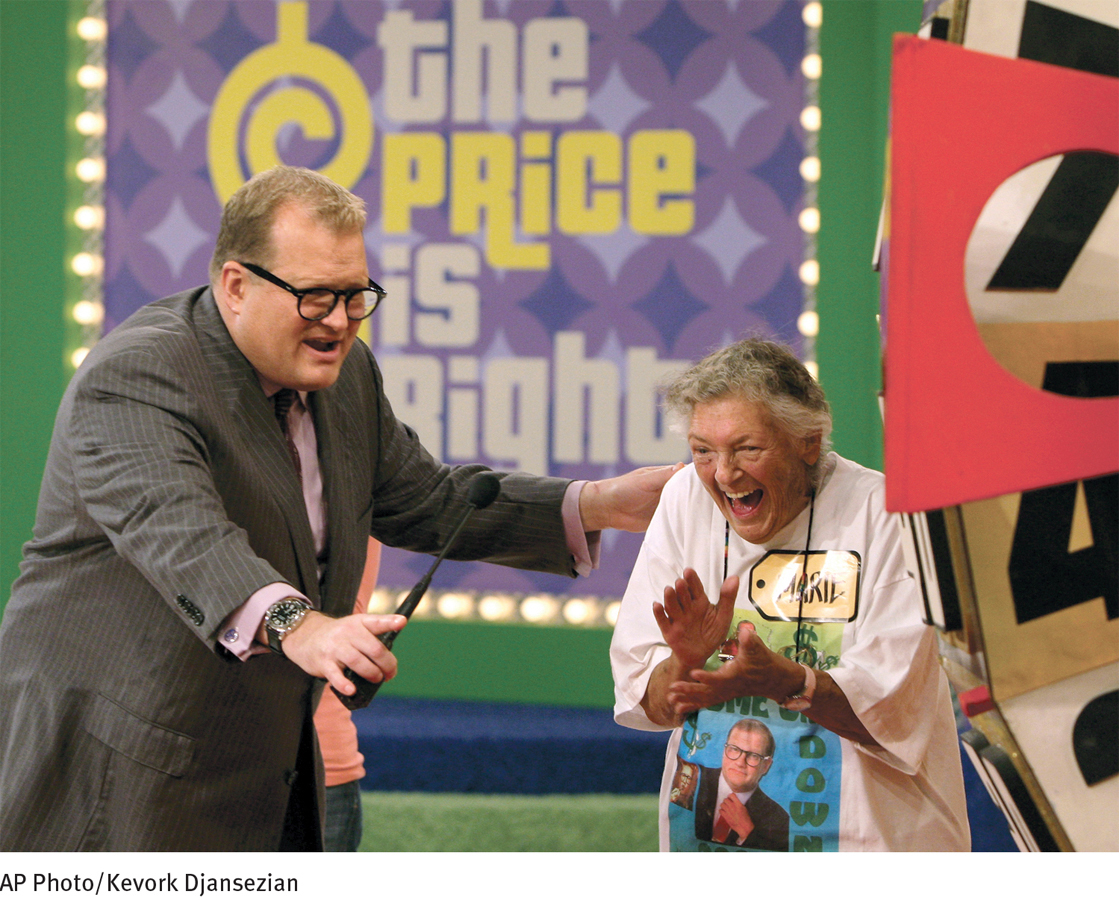Chapter Introduction
| CHAPTER |
| 8 |
Treatments for Depressive and Bipolar Disorders

TOPIC OVERVIEW
Psychological Approaches
Sociocultural Approaches
Biological Approaches
How Do the Treatments for Unipolar Depression Compare?
Lithium and Other Mood Stabilizers
Adjunctive Psychotherapy
Mid-
J. K. Rowling, author of the “Harry Potter” books (in Amini, 2008)
When you’re clinically depressed the serotonin in your brain is out of balance and probably always will be out of balance. So I take medication to get that proper balance back. I’ll probably have to be on it the rest of my life.
Terry Bradshaw, Super Bowl quarterback and sports analyst (in Morgan & Shoop, 2004)
[A holistic healer] introduced me to this new way of kind of treating depression, which is without the uptake inhibitors, to slowly get off the uptake inhibitors with the help of a doctor … Supplements… It is vitamins… It’s a wonderful thing.
Jim Carrey, comedy actor (Carrey, 2013, 2008)
I struggled with chronic depression. I was in bad shape…. I did do therapy and antidepressants for a brief period, which helped me. Which is what therapy does: it gives you another perspective when you are so lost in your own spiral … And honestly? Antidepressants help! If you can change your brain chemistry enough to think: “I want to get up in the morning.”.
John Hamm, actor, star of Mad Men (Hamm, 2010)
In my case, ECT [elctroconvulsive therapy] was miraculous. My wife was dubious, but when she came into my room afterward, I sat up and said “Look who’s back among the living.” It was like a magic wand.
Dick Cavett, talk show host (Cavett, 1992)
I took [lithium] faithfully and found that life was a much stabler and more predictable place than I had ever reckoned. My moods were still intense and my temperament rather quick to the boil, but I could make plans with far more certainty and the periods of absolute blackness were fewer and less extreme….
Kay Redfield Jamison, clinical researcher (in Jamison, 1995, pp. 5, 153, 212)
[T]he hospital was my salvation, and it is something of a paradox that in this austere place with its locked and wired doors and desolate green hallways … I found the repose, the assuagement of the tempest in my brain, that I was unable to find in my quiet farmhouse…. For me the real healers were seclusion and time.
William Styron, novelist (in Styron, 1990, pp. 68–
Each of these people suffered from and overcame a depressive or bipolar disorder. And, clearly, all believe that the treatment they received was a key to their improvement—

How could such diverse therapies be so helpful to people suffering from the same or similar disorders? As this chapter will show, disorders that feature severe changes in mood—

How do people feel about depression and treatment?
According to a recent survey, more than 80 percent of Americans believe that depression is a serious condition that requires treatment. Nineteen percent consider depression to be a sign of personal weakness.